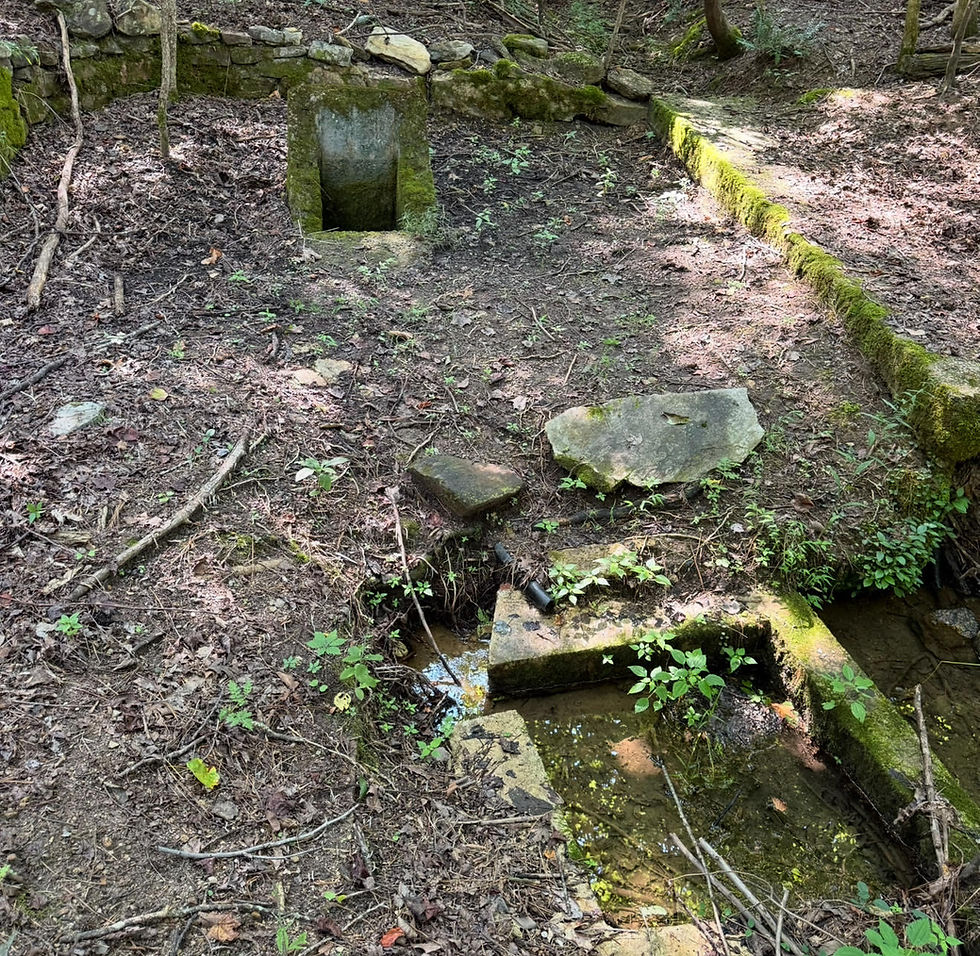Rural Exploration (RUREX): How to Find Historical Sites)
- Webmaster
- Feb 28, 2024
- 3 min read

Being curious, detail-oriented, and courageous are the most important inherited traits of an explorer. While you can teach people how to read maps, look at aerial photography, and determine latitude and longitude, you cannot make someone curious. Like color blindness, you’re either born curious or not. Assuming your curiosity led you to this article, I will teach you the basics of RUREX. If URBEX = Urban Exploration, I will assume RUREX means Rural Exploration. If not, I just coined a new word, and you heard from me first.
Step 1 – Find the Right Map
The United States has mapped out every inch of the country in the form of topographical maps. A topographical map shows land features, ridge lines, hills, mountains, valleys, streams, creeks, rivers, cities, railroad tracks, and more. A well-done topo map shows the location of buildings.
In the following example, I use the Tate Nelson Quadrangle Map of 1928 to illustrate its utility.

But that alone doesn’t tell you how to find it. On all maps, some features generally don’t move much. Namely mountains and churches. Believe it or not, streams and creeks, especially in Georgia, change their paths a lot over time. The reason isn’t erosion either. Georgia had so many manmade lakes (reservoirs) and dams built that the water pathways on many alluvial bodies have changed dramatically over time.
In the picture above you see Mole Mountain in the upper left. You notice a road approaching Mole Mountain splits to the west and another goes northeast of it.
Step 2 – Compare it to Google Maps

Comparing it to Google Maps you’ll notice that some of the same roads are in place and others have disappeared. The road on the map beneath the 1512 elevation marker is Long Swamp Church Road. Pendley Circle is not on this map. (Not in its present form).
Step 3 – Compare it to USDA Aerial Imagery
In 1938, the United States Department of Agriculture began compositing aerial photos of the counties of North Georgia. These maps are generally available by decade through the 1980s in the National Archives. More current maps are available through different systems.

Step 4 – Compare it to Google Earth Imagery
Locally, Google Earth imagery is available from the present with varying degrees of clarity going back to 1992. The resolution is worse in the 1992 Google image than the 1955 USDA picture.

Step 5 – Establish Latitude and Longitude Coordinates
Clicking on the exact site with Google Earth will reveal the exact coordinates of the location. In this case, 34.466765 -84.354597 are the house location coordinates.
Step 6 – Cross-check the coordinates in Google

Typing them in and going to the maps tab reveals the following image.
Step 7 – Get Permission to Explore
In this case, I replied to an article written in the Pickens Progress. Someone presented an aerial photo and asked if anyone knew anything about the property. I was the right person for the task. At the time, this property was for sale. The Realtor was hoping that the discovery of a historical site on the property would buy the seller’s time. The property was in foreclosure.
Step 8 – Explore and Document
I never expected to see what I found.

In the house, I found correspondence between Vida Hendrix and her kin in Copperhill, Tennessee. I forwarded it to the family. The house was occupied through the early 60s. I found magazines from the 1970s and newspapers from that period.

Step 9 – For Extra Credit – Look at the Legal Description

Step 10 – Research the Owners (NOTE: The deed chain goes back further when the property was still part of Cherokee County (before 1853)
James Coward (t), Jr. bought most of Land Lot 8 from Sam Tate in 1843 (Cherokee County D.G.B. p 294-295)
·Hiram D. Cowart bought for $200 same from Robert Cowart (also spelled Coward) in 1872 (Deed book D/202).
Van Buren Tatum bought for $225 from Hiram D Cowart in 1874 (Deed book D/392).
William Ervin Fitts bought the same in 1893 (i/616) from what looks like his father-in-law Van Buren Tatum.
Henry Fitts purchased for $3,000 in 1941(Deed book W/ page 46) from William E. (D) Fitts
Ada Hendricks and two of her children purchased the property for $2,050 from Henry Fitts (Deed book Z/168) in 1946.
Step 11 – Look at Other Maps
The legal description includes 70 acres of Land Lot 8 and touched Harrison Pendley’s property line.

Step 12 – Compile
Put everything together and see what you come up with. I did not include all I discovered or found in this case. The document would be too long and boring for most 😊



Here is another resource that I just learned about that can help as well. It is a lidar map of the U.S. You can drill down pretty close and can see foundations of homes, tombstones, road beds, walls, etc. Just as you see in the shows on discovery where they map out central America, here it is for the U.S. Strips away the trees to show what is underneath! USGS 3DEP Viewer (nationalmap.gov)